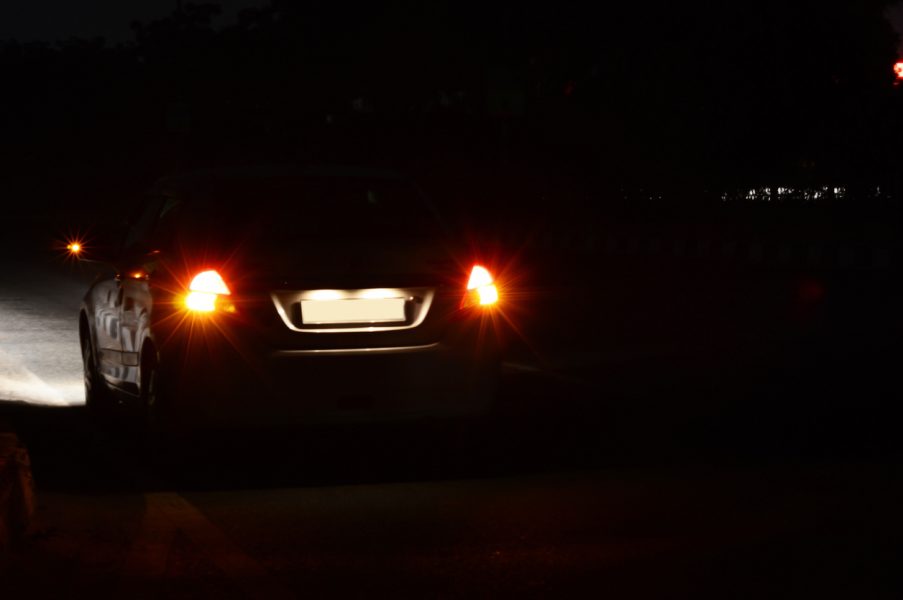
Anjali’s death: Sultanpuri-Kanjhawala road is risky for just about anyone
The Federal made a visit to get an idea of what makes the north-west Delhi locality so unsafe even for residents, leave alone pedestrians and vehicle drivers

The tragic death of 23-year-old Anjali Sharma early in the morning on Sunday — after her two-wheeler was hit by a Maruti Suzuki Baleno and she was dragged down the road for many kilometres — has made the Delhi citizenry freshly aware of how unsafe the city is. Crime rates have been rising sharply and, as the Nirbhaya case showed, going out at night even with a male accompanying them is unsafe for women.
The Federal visited the locality to get an idea of what Anjali must have faced, riding the Scooty on the Sultanpuri to Kanjhawala main road, looking forward to life in 2023.
Also read: Anjali death: ‘Man accused of driving car was at home during accident’
An informal chat with residents and shopkeepers in Sultanpuri was revealing. Those who frequently use the same stretch of road say it is unsafe after 8 pm, be it for man, woman or animal.
Poor police vigilance
Ajay, 36, owns a metal works shop near the Sultanpuri police station. “I regularly use the same route to commute from my home. On the evening of December 31, barely hours before the tragic incident, I too travelled on this stretch,” he recounted.
That the police vigilance is far from adequate is a common refrain in the neighbourhood. “A car dragged the body of a 23-year-old woman as she got stuck in the undercarriage. The fact that not even a single police control room (PCR) van could pin down the Baleno on the 12-km stretch of the Sultanpuri-Kanjhawala main road is a testimony to the level of police vigilance and the prevailing law-and-order situation in the area,” he said.
Sultanpuri, in north-west Delhi, is one of the national capital’s major resettlement colonies, with a mixed population of Hindus, Sikhs and Muslims. A sizable section of the population is engaged in the metal gratings business, catering to construction companies. The locality is approximately 17 km from the Janakpuri West Metro station and around 7 km from the Nangloi railway station.
Steeped in darkness
The 12-km stretch on the main road is notorious for its darkness. It lacks sufficient street lights, CCTV cameras and patrol vehicles, rendering it highly unsafe for road users. “We have complained about the condition of the road in the past to the local leadership, as it is an arterial link to other parts of Sultanpuri,” said Ajay, who owns a house at the main junction in Kanjhawala.
This writer went on a short ride along the route with Ajay at around 1.25 pm on a weekday. There was heavy traffic, with DTC buses, battery rickshaws and 12-seater autos crowding the road. An ongoing construction project of the Delhi Jal Board was not helping the road congestion. There were a large number of temporary settlements along the route for a 1.5-2 km stretch.
As pointed out by Manoj, one of the occupants of the settlements, they have nowhere else to go. “Where do we go?” he asked. “We have been promised permanent structures by the government, but it keeps getting delayed.”
In the early hours of January 1, in the thickly populated locality, most people were unaware that a young woman had met with a gory death on the main road. Manoj, for one, had no inkling of it. Only when the special police commissioner came for an inspection did he come to know about the horrific incident, he recalled.
Veritable death-trap
Even in broad daylight, the road is a veritable death-trap. It is uneven, riddled with potholes and gets highly congested during office hours. A section of it is dug up for the Jal Board project and there are large boards advising drivers about the speed limit.
This particular stretch of road didn’t have a single CCTV camera earlier, said Manoj. “Now, with the AAP government’s initiative to install CCTVs throughout Delhi, we have at least a few cameras,” he said. This writer noticed 4-5 CCTV cameras on the 12-km stretch.
Shalini, another Sultanpuri resident, rued the dearth of streetlights. They are few and far between, and most are non-functional, she said. At night, the road is illuminated almost solely by the shop and vehicle lights. After 10 pm, as the shops bring down the shutters and the vehicular traffic thins down, it is almost pitch dark. The residents avoid the stretch to the extent possible due to the ongoing construction work and poor visibility.
Teeming with miscreants
It’s not just the roads that are unfriendly. People, particularly pedestrians, need to keep a wary eye out for hardcore criminals. Thieving and chain snatching occur at perturbing frequency. As substance abuse is rampant in the area, the perpetrators are constantly on the lookout for easy money to procure drugs, said Shalini.
The spot where Anjali’s two-wheeler crashed is 7-8 km from the nearest police station. When The Federal asked a cop on beat duty why she was not assisted, he said he and his colleague respond immediately whenever they get a direction from the PCR.
Also read: Kejriwal calls Kanjhawala accident ‘shameful’; DCW chief sends notice to cops
How come, on January 1, despite more than 20 calls reportedly made to the PCR, the police failed to act timely? “The probe is being led by Special Commissioner of Police, Shalini Singh, and the findings will soon be submitted to the home ministry,” he said.
Shalini Singh has been asked by the Union home ministry, under which Delhi police falls, to submit a detailed report on the case. She has visited the crime scene and conducted an inspection of the 12-km stretch from Sultanpuri to Kanjhawala.
Till the details emerge, and possibly well after it too, the residents of Sultanpuri will continue to be wary of the streets.

